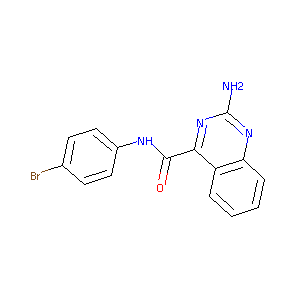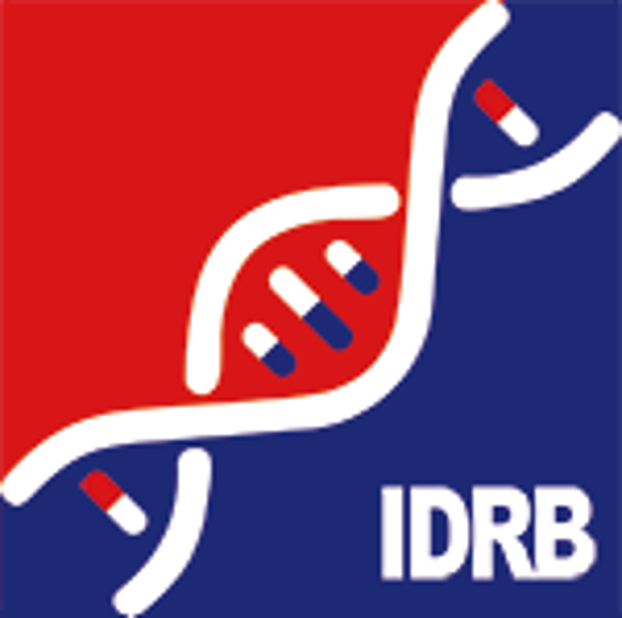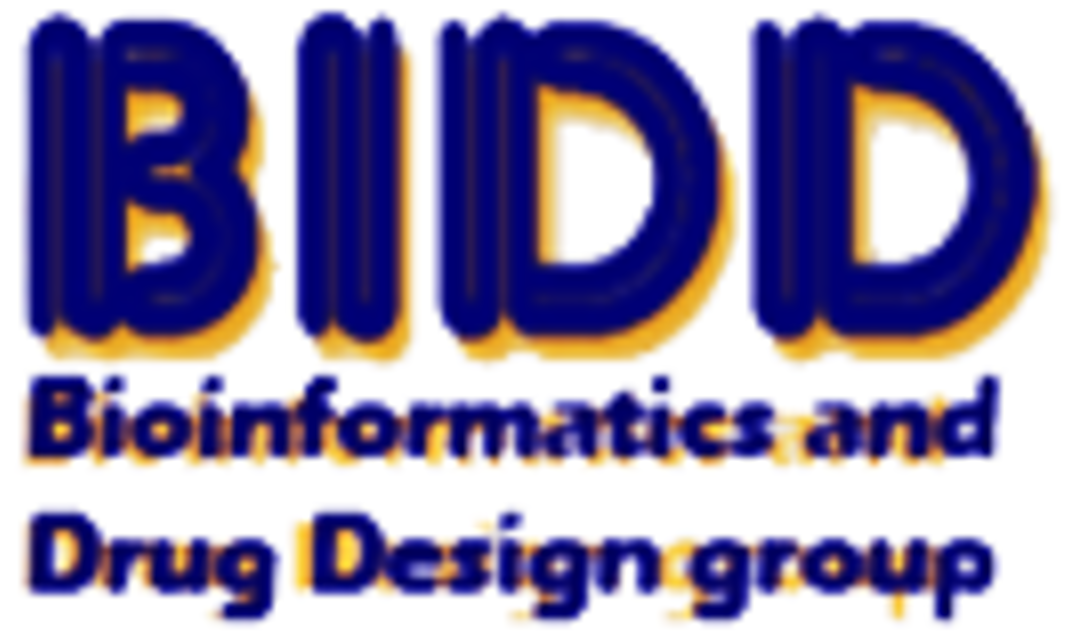Drug Information
| Drug General Information | |||||
|---|---|---|---|---|---|
| Drug ID |
D0Z2CL
|
||||
| Former ID |
DNC007899
|
||||
| Drug Name |
2-aminoquinazoline-4-carboxy-(4-bromophenyl)amide
|
||||
| Drug Type |
Small molecular drug
|
||||
| Indication | Discovery agent | Investigative | [1] | ||
| Structure |

|
Download2D MOL |
|||
| Formula |
C15H11BrN4O
|
||||
| Canonical SMILES |
C1=CC=C2C(=C1)C(=NC(=N2)N)C(=O)NC3=CC=C(C=C3)Br
|
||||
| InChI |
1S/C15H11BrN4O/c16-9-5-7-10(8-6-9)18-14(21)13-11-3-1-2-4-12(11)19-15(17)20-13/h1-8H,(H,18,21)(H2,17,19,20)
|
||||
| InChIKey |
DYTZVUGMYADHJM-UHFFFAOYSA-N
|
||||
| PubChem Compound ID | |||||
| Target and Pathway | |||||
| Target(s) | Adenosine A3 receptor | Target Info | Inhibitor | [1] | |
| Reactome | Adenosine P1 receptors | ||||
| G alpha (i) signalling events | |||||
| WikiPathways | Nucleotide GPCRs | ||||
| GPCRs, Class A Rhodopsin-like | |||||
| GPCRs, Other | |||||
| References | |||||
| REF 1 | J Med Chem. 2007 Dec 27;50(26):6596-606. Epub 2007 Nov 30.Scouting human A3 adenosine receptor antagonist binding mode using a molecular simplification approach: from triazoloquinoxaline to a pyrimidine skeleton as a key study. | ||||
If You Find Any Error in Data or Bug in Web Service, Please Kindly Report It to Dr. Zhou and Dr. Zhang.

